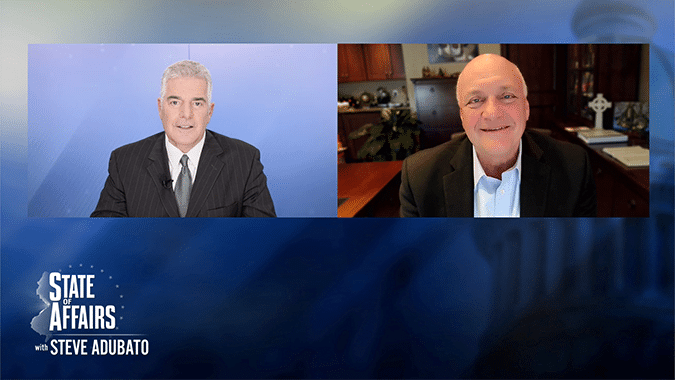Nicole Sandelier, director of Economic Policy Research at NJBIA and executive director of Focus NJ, provided the following summary of NJBIA’s Education and Workforce Development Policy Committee meeting, held virtually on Jan. 21.

Senator Teresa Ruiz and Assemblywoman Mila Jasey spoke at NJBIA’s Education and Workforce Development Policy Committee last week to discuss the ongoing COVID-19 pandemic and the challenges the state continues to face in education.
In addition to creating new issues raised during the meeting, the pandemic has shed light on and exacerbated the glaring pre-existing disparities on all levels from Pre-K to higher education.
Typical classroom dynamics across all levels of education has changed drastically due to a virtual environment, whether completely online or hybrid. For K-12 educators, in a virtual environment, it is difficult to keep track of students, ensure their daily attendance, deliver quality and engaging instruction.
The state Department of Education has not set consistent methods and standards of data collection across districts on important indicators such as attendance and academic proficiency, as the PARCC standardized test was not administered this year across the state.
Without consistent indicators in those areas, it is difficult to correctly identify gaps and put measures in place to effectively address them.
However, it is clear that students are developing gaps in their education and will continue to be left behind and suffer long term consequences due to the disruption COVID-19 has caused.
These gaps will most affect already disadvantaged groups, such as low-income communities and students of color who will be left further behind.
Higher education has also experienced similar difficulties because of COVID-19.
With most institutions in New Jersey switching to a virtual environment, there has been a decrease in attendance and enrollment, especially among people of color and first-generation college students.
This recent trend has been inconsistent with trends in past recessions, where there is an increase in people seeking advanced skills and education to gain employment opportunities.
Though this current recession is unlike any other in recent history, the decrease in interest in higher education may indicate that there is less perceived value in a virtual based education.
Especially as college costs have risen significantly in recent years, the decrease in the perceived value of a college education also decreases the expected return on investment and may lead to more students choosing not to pursue a degree.
With the numerous challenges the state is facing in all facets of education; the steps we need to take to mitigate these challenges going forward are crucial.
Senator Ruiz and Assemblywoman Jasey discussed bills that address issues such as the lack of data collection, increased access to community college, alternate education programs for students at risk of dropping out, the expansion of multigenerational workforce and academic support services for families in need.
In addition to these measures, it is essential to increase access to virtual education through technology, especially for students who lack devices, reliable internet access and other technological tools., and to focus on re-opening all the states’ education institutions to allow for better quality instruction.
To do so, teachers and educational staff must be prioritized in the vaccine distribution. There must also be continuing efforts to develop and administer a vaccine for the youth population, ages 16 and under. In
Beyond the pandemic, K-12 students need access to information and guidance regarding higher education and career pathways.
In higher education, access to funding and increasing accessibility, especially for low income and first-generation students is imperative. The ongoing success of programs such as Equal Opportunity File should be encouraged.
In addition, colleges and universities should reallocate funds to prioritize improving education rather than campus-based facilities.
For the business community, though high unemployment rates and high levels of uncertainty persist, continued collaboration with K-12 schools and universities through recruitment, apprenticeships, experiential learning and mentorships will help foster a better and more prepared workforce post-pandemic.



